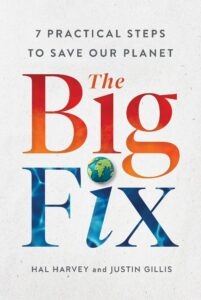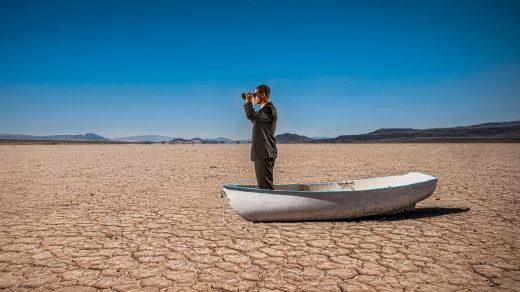The secret levers you can pull to help fight climate change
Two-thirds of Americans are worried about climate change, according to a recent survey from Yale and Meta, but only a small fraction of those people say that they’re pushing for climate action. It’s easy to feel paralyzed by the enormity of the problem and not know where to begin—and to feel powerless as an individual at a time when the Supreme Court just made it harder for the EPA to regulate emissions, the federal government is slow to act, and the impacts of climate change are already obvious, from extreme heat to floods and wildfires. But a new book, The Big Fix, outlines what changes can help emissions drop fastest, and the practical steps you can take to make those changes happen.

“If you think of all climate change as a problem—and everything you’ve heard of, from biomass to windmills—is a solution, it’s not at all obvious how to find one’s place,” says Hal Harvey, CEO of the environmental policy firm Energy Innovation, who wrote the book with New York Times reporter Justin Gillis. “One of our goals in writing this book is to spur what I sometimes call precision intervention. In other words, to identify what really matters in each of the sectors.”
Decisions that often go unnoticed by most people—about things like local building codes, or state power plant regulations—have an outsize impact on the future, the book says. And they’re places that individuals can have an influence. The power grid, for example, the second-largest source of emissions in the U.S., is controlled by “public utilities commissions” in each state that rarely hear from the public.
In part, that’s because it’s hard to understand how the system works. The book quotes climate writer David Roberts, who once said that the subject “is excruciatingly boring, a thicket of obscure institutions and processes, opaque jargon, and acronyms out the wazoo. . . . Utilities are shielded by a force field of tedium.” But getting involved isn’t necessarily complicated. The book talks about mothers testifying at a public utility commission meeting in Denver a few years ago, about the effects of power-plant pollution on their children’s health. At the time, the local utility wanted to shut down old coal plants; some state legislators opposed the idea. But the testimony from mothers helped create more public support for the board’s decision to allow the plants to close.
“If you want to get a lot of renewables, you have to learn about public utilities commissions,” says Harvey. “It seems daunting, but it turns out to be the exact opposite: It’s empowering. Because you can master a venue, you can understand the tempo, the scheduling, the rules for submitting evidence. You can see what’s missing. There’s no parents involved, there’s no health professionals involved. There’s not enough jobs experts involved. Once you’ve identified the important decision, and the venue for decision-making, the ‘What can I do?’ question begins to answer itself.”
Right now, the commissions hear mostly from the utilities that they regulate. But having doctors or parents or other concerned citizens at meetings makes a difference, Harvey says. It’s not unlike the YIMBY movement (an acronym for “yes, in my backyard”), which helped support the growth of more housing in some cities as YIMBY activists showed up at planning meetings that, in the past, had been dominated by anti-growth activists. But even if you can’t attend utility commission meetings in person, it helps to sign up for alerts from groups like the Sierra Club, Harvey says, and then contact commissioners by letter or video call or digital comments.
The Big Fix walks through several other concrete ways to get involved. Buildings, for example, another huge source of emissions in the U.S., are controlled by local building codes. Citizens can advocate for all-electric buildings that eliminate the health and climate problems caused by fossil-powered furnaces and stoves. The gas industry, unsurprisingly, is fighting hard against this type of change, including through the use of fake “grassroots” groups. Builders also often oppose the changes. Citizens also can advocate for other local changes that can have major impacts, such as city policies to electrify buses and garbage trucks and other vehicles that run throughout the day and pollute more than individual cars.
Some changes that you can make in your own life also matter; renewable-electricity advocate Saul Griffith talks about “personal infrastructure” choices, such as installing solar panels or heat pumps at your home. But policy is also critical since climate tech can’t grow quickly enough without that support. Both wind and solar power existed for decades with little use, and government support was critical to get it to the scale necessary for costs to drop. Harvey argues that being a green consumer can lead to being a green citizen.
“The act of eating beef a little less often, driving an electric car, getting some insulation in your roof, putting a solar panel over the garage, makes you realize this is not that hard,” he says. “And gives you some experience [and some] credibility. Then you can go down to City Hall and say, Hey, let’s switch these transit buses around.”
Fast Company , Read Full Story
(15)



